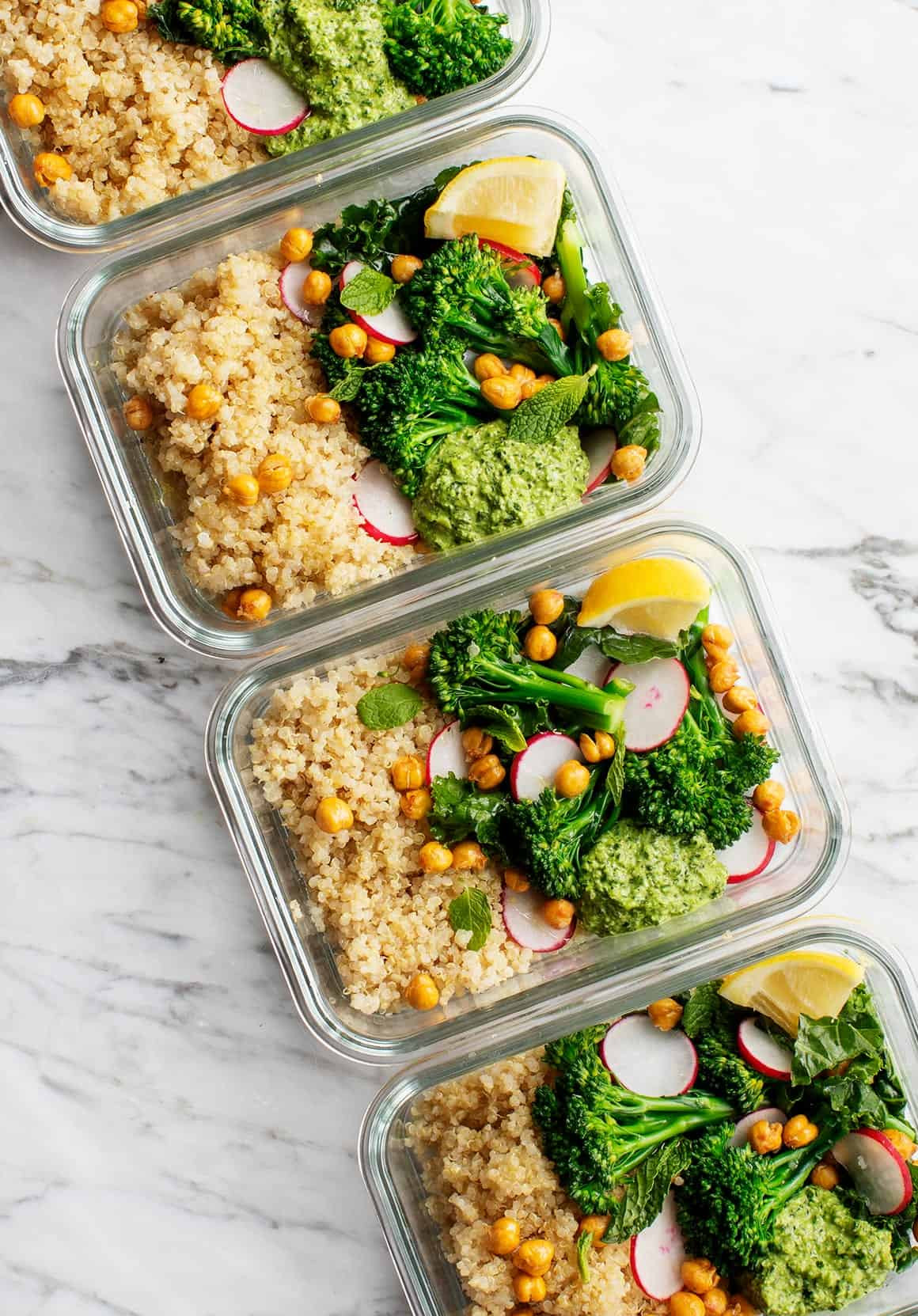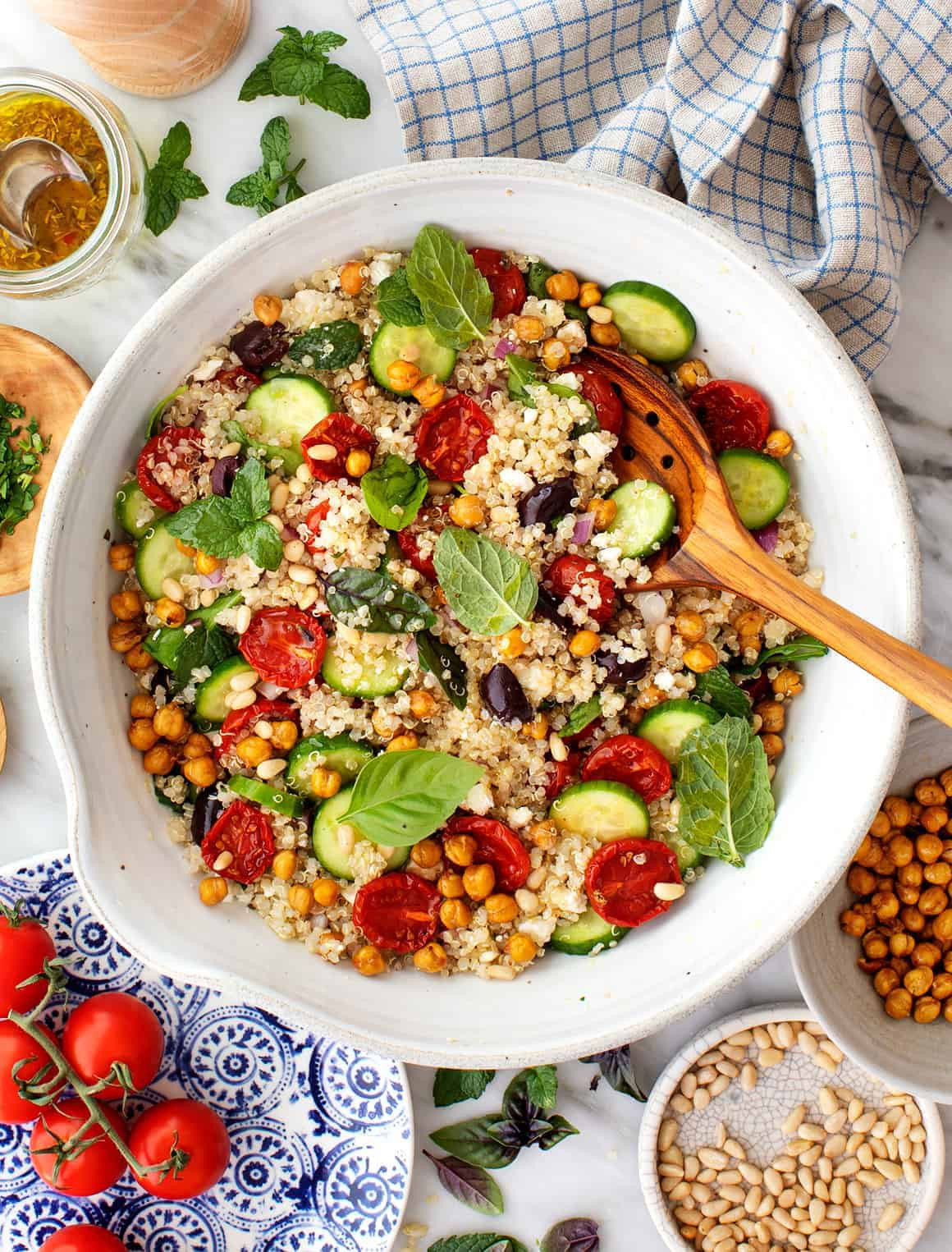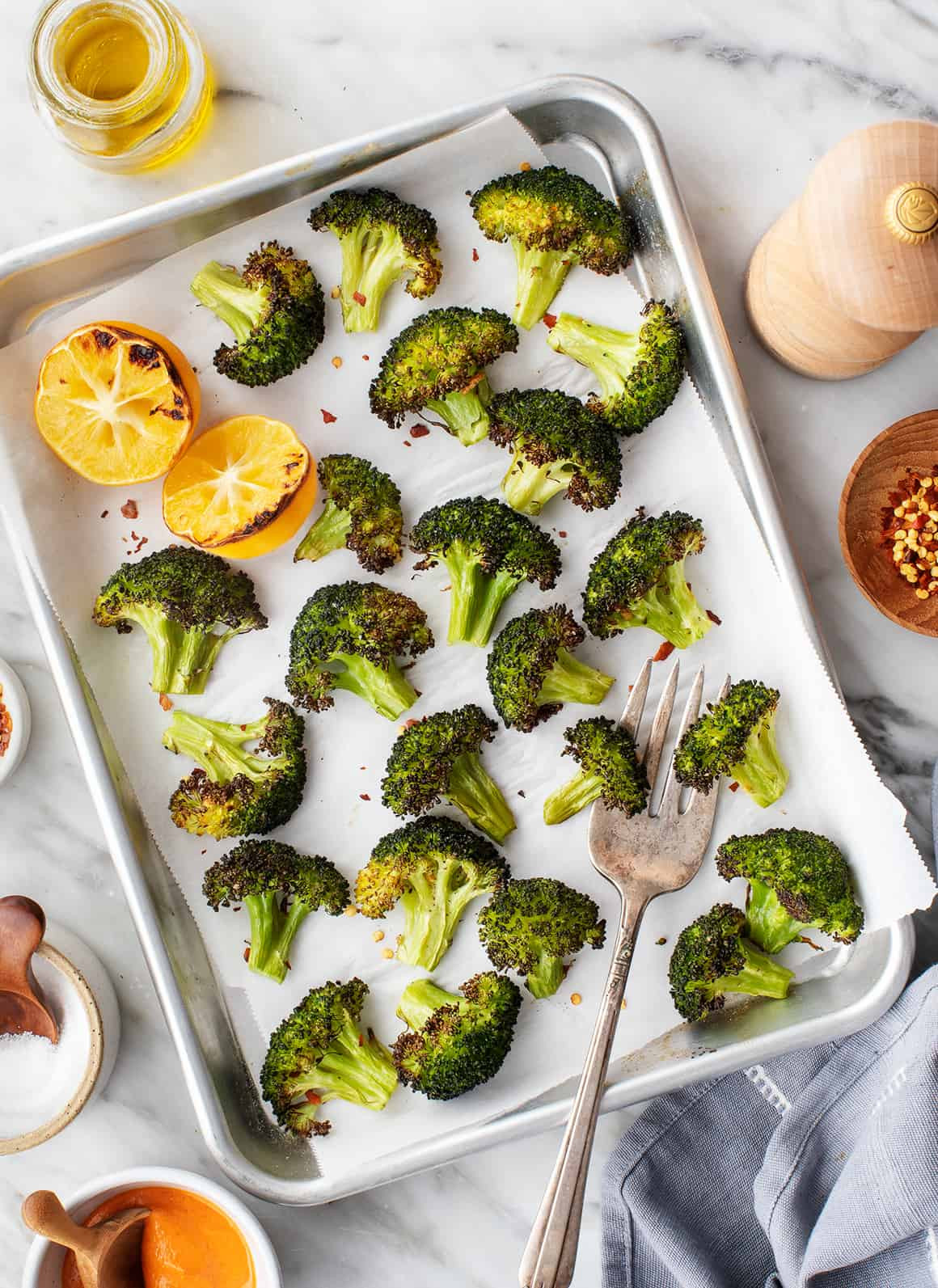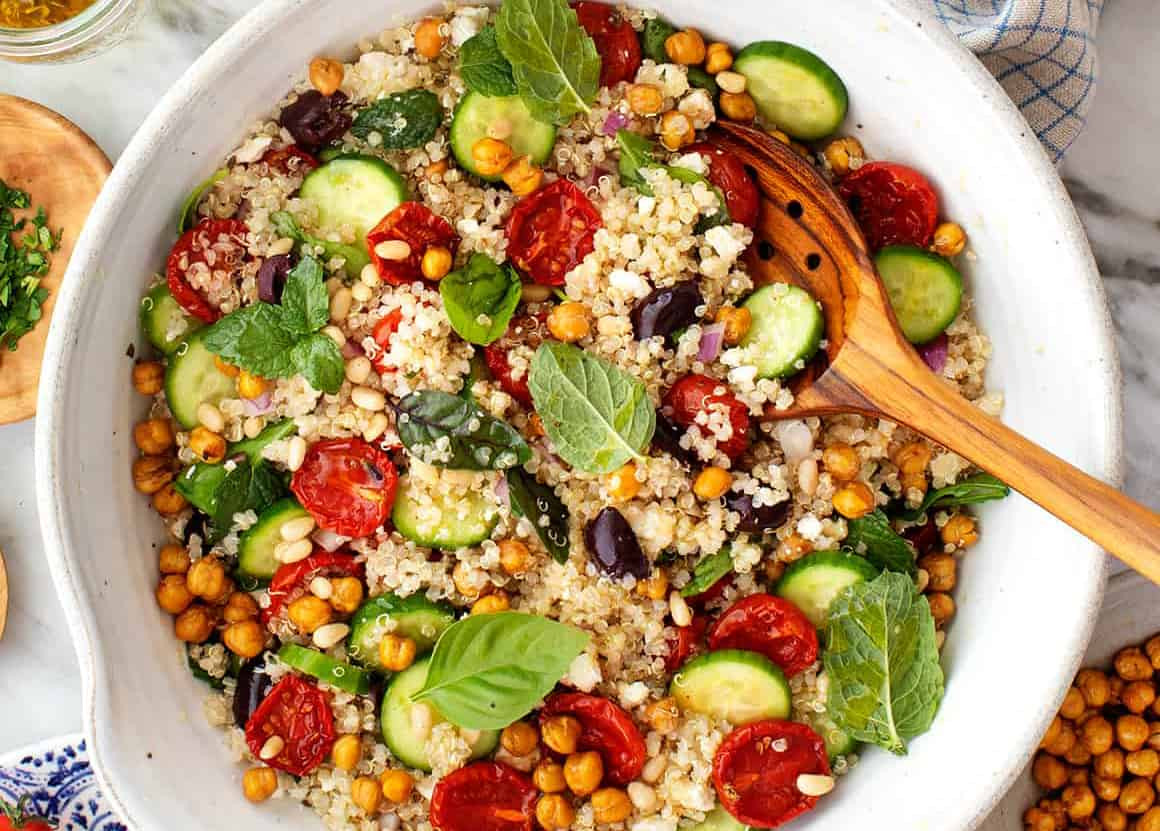Food Prep is the cornerstone of a healthy lifestyle, especially for busy individuals in the US. At larosafoods.com, we champion the art of food preparation as a pathway to delicious, nutritious meals without the daily grind. Discover strategies, backed by culinary insights, that will transform your eating habits. Embrace meal planning, efficient grocery shopping, and smart storage solutions to revolutionize your food journey.
1. Why Is Food Prep Important for a Healthy Lifestyle?
Food prep is very important to maintaining a healthy lifestyle because it ensures you eat nutritious meals regularly, manage portions, and save time and money. According to a study by the University of North Carolina, individuals who spend more time on meal preparation consume healthier diets overall. In the US, where busy schedules often lead to reliance on fast food, food prep is a practical strategy for maintaining well-being.
1.1. What are the Benefits of Food Prep?
The benefits of food prep are numerous, impacting both your health and your wallet.
- Healthier Eating: Pre-planning meals helps avoid impulsive, unhealthy food choices.
- Portion Control: Preparing your own meals allows you to manage portion sizes effectively, aiding in weight management.
- Time-Saving: Cooking in bulk and portioning meals saves significant time during the week.
- Cost-Effective: Eating pre-prepared meals reduces the temptation to dine out, saving money.
- Reduced Food Waste: Planning meals in advance minimizes food spoilage and waste.
1.2. How Does Food Prep Help with Weight Management?
Food preparation is a pivotal tool for weight management because it empowers you to control calorie intake, balance macronutrients, and avoid processed foods. Research from Harvard T.H. Chan School of Public Health suggests that people who cook more often have lower body fat percentages. By preparing meals at home, you select healthier ingredients, control portion sizes, and avoid the hidden sugars and fats common in restaurant meals.
2. How to Start Food Prep: A Step-by-Step Guide
Starting food prep might seem daunting, but breaking it down into manageable steps makes it achievable. Here’s a comprehensive guide to help you begin:
- Plan Your Meals: Decide what you want to eat for the week. Consider your schedule, dietary needs, and preferences.
- Create a Shopping List: Based on your meal plan, create a detailed shopping list to ensure you have all the necessary ingredients.
- Shop Smart: Stick to your list and buy fresh, whole foods whenever possible.
- Set Aside Prep Time: Dedicate a few hours each week for prepping. Sunday afternoons are popular, but choose a time that works best for you.
- Prep Your Ingredients: Wash, chop, and measure all your ingredients. Store them in airtight containers.
- Cook in Bulk: Prepare large batches of grains, proteins, and vegetables that can be used in various meals.
- Portion and Store: Divide your cooked food into individual serving containers and store them in the fridge or freezer.
- Label Everything: Label each container with the contents and date to keep track of what you have.
2.1. What Are the Essential Tools for Food Prep?
Having the right tools can make food prep more efficient and enjoyable. Here are some essentials:
| Tool | Use |
|---|---|
| Knives | A good chef’s knife, paring knife, and serrated knife are essential for chopping and slicing. |
| Cutting Boards | Use separate boards for meats and vegetables to prevent cross-contamination. |
| Mixing Bowls | Various sizes for mixing ingredients. |
| Measuring Cups/Spoons | Accurate measurements are crucial for recipes. |
| Food Storage Containers | Airtight containers to keep food fresh in the fridge or freezer. |
| Slow Cooker/Instant Pot | Great for cooking large batches of soups, stews, and grains. |
| Food Processor | Useful for chopping vegetables quickly or making sauces and dips. |
| Blender | Ideal for making smoothies, soups, and sauces. |
| Kitchen Scale | For precise portioning and baking. |




2.2. How to Plan Meals for the Week
Effective meal planning is the foundation of successful food prep. Here’s how to do it:
- Assess Your Schedule: Consider your commitments and the time you’ll have available each day.
- Set Realistic Goals: Start with a few meals per week and gradually increase as you become more comfortable.
- Choose Recipes: Select recipes that align with your dietary preferences, nutritional goals, and skill level.
- Check Your Pantry: Before shopping, take inventory of what you already have to avoid duplicates.
- Create a Theme: Plan meals around a specific cuisine or ingredient to simplify the process. For example, “Taco Tuesday” or “Mediterranean Monday.”
- Incorporate Variety: Include a mix of proteins, carbohydrates, and vegetables to ensure a balanced diet.
- Plan for Leftovers: Intentionally cook extra portions to use for lunches or subsequent meals.
3. Food Prep Ideas for Different Meals
Different meals require different approaches to food prep. Here are some ideas to get you started:
3.1. Breakfast Food Prep Ideas
Breakfast is often the most rushed meal of the day. Preparing it in advance can save time and ensure a healthy start.
- Overnight Oats: Combine oats, milk, yogurt, and toppings in a jar the night before. In the morning, grab and go.
- Chia Seed Pudding: Mix chia seeds with milk and sweetener. Let it sit overnight to thicken.
- Breakfast Burritos: Make a batch of burritos with eggs, beans, and veggies. Wrap them individually and freeze.
- Smoothie Packs: Combine fruits, spinach, and protein powder in a bag. Freeze and blend with liquid in the morning.
- Hard-Boiled Eggs: Boil a dozen eggs at the beginning of the week for a quick, protein-packed breakfast.
3.2. Lunch Food Prep Ideas
Lunches should be easy to transport and satisfying. Here are some ideas for prepping ahead:
- Salad Jars: Layer dressing, grains, vegetables, and protein in a jar. When ready to eat, shake and enjoy.
- Quinoa Bowls: Combine cooked quinoa with roasted vegetables, beans, and a flavorful sauce.
- Sandwich Fillings: Prepare fillings like egg salad or chickpea salad in advance. Assemble the sandwiches fresh each day.
- Soup: Make a large batch of soup and portion it into containers for easy reheating.
- Pasta Salad: Cook pasta and toss it with vegetables, cheese, and dressing.
3.3. Dinner Food Prep Ideas
Dinners can be more complex, but with some prep, they can be manageable even on busy weeknights.
- Marinated Meats: Marinate chicken, beef, or tofu in advance. Store in the fridge and cook when ready.
- Roasted Vegetables: Roast a large tray of vegetables that can be used as a side dish or added to meals.
- Grains: Cook grains like rice, quinoa, or barley in bulk.
- Casseroles: Assemble casseroles ahead of time and bake when needed.
- Stews and Curries: These dishes often taste better the next day and are perfect for meal prepping.
4. Healthy Recipes for Food Prep
To help you get started, here are a few healthy and delicious recipes that are perfect for food prep:
4.1. Mediterranean Quinoa Salad
This salad is packed with protein, fiber, and healthy fats. It’s perfect for lunch or a light dinner.
Ingredients:
- 1 cup quinoa, cooked
- 1 cup cherry tomatoes, halved
- 1 cucumber, diced
- ½ cup Kalamata olives, sliced
- ½ cup feta cheese, crumbled
- ¼ cup red onion, diced
- ¼ cup fresh parsley, chopped
- 3 tablespoons olive oil
- 2 tablespoons lemon juice
- 1 clove garlic, minced
- Salt and pepper to taste
Instructions:
- In a large bowl, combine the cooked quinoa, cherry tomatoes, cucumber, olives, feta cheese, red onion, and parsley.
- In a small bowl, whisk together the olive oil, lemon juice, garlic, salt, and pepper.
- Pour the dressing over the salad and toss to combine.
- Portion into containers and store in the fridge for up to 5 days.
4.2. Chicken and Vegetable Stir-Fry
This stir-fry is a quick and easy meal that can be customized with your favorite vegetables.
Ingredients:
- 1 pound chicken breast, cubed
- 1 tablespoon olive oil
- 1 onion, sliced
- 2 cloves garlic, minced
- 1 bell pepper, sliced
- 1 cup broccoli florets
- 1 cup snap peas
- ¼ cup soy sauce
- 2 tablespoons honey
- 1 tablespoon rice vinegar
- 1 teaspoon ginger, grated
- Cooked rice for serving
Instructions:
- In a large skillet or wok, heat the olive oil over medium-high heat.
- Add the chicken and cook until browned.
- Add the onion and garlic and cook until softened.
- Add the bell pepper, broccoli, and snap peas and cook until tender-crisp.
- In a small bowl, whisk together the soy sauce, honey, rice vinegar, and ginger.
- Pour the sauce over the vegetables and chicken and cook until thickened.
- Serve over cooked rice.
- Portion into containers and store in the fridge for up to 4 days.
4.3. Black Bean Soup
This hearty soup is packed with protein and fiber. It’s perfect for a cold day.
Ingredients:
- 1 tablespoon olive oil
- 1 onion, diced
- 2 cloves garlic, minced
- 1 teaspoon cumin
- ½ teaspoon chili powder
- 4 cups vegetable broth
- 2 cans (15 ounces each) black beans, rinsed and drained
- 1 can (10 ounces) diced tomatoes and green chilies
- Salt and pepper to taste
- Optional toppings: avocado, sour cream, cilantro
Instructions:
- In a large pot, heat the olive oil over medium heat.
- Add the onion and garlic and cook until softened.
- Add the cumin and chili powder and cook for 1 minute.
- Add the vegetable broth, black beans, and diced tomatoes and green chilies.
- Bring to a boil, then reduce heat and simmer for 20 minutes.
- Use an immersion blender to blend the soup until smooth (or blend in batches in a regular blender).
- Season with salt and pepper to taste.
- Serve with your favorite toppings.
- Portion into containers and store in the fridge for up to 5 days or freeze for longer storage.
5. Tips for Efficient Food Prep
Efficiency is key to making food prep a sustainable habit. Here are some tips to help you streamline the process:
5.1. How to Store Food Properly
Proper food storage is essential for maintaining freshness and preventing foodborne illnesses.
- Airtight Containers: Use airtight containers to store food in the fridge or freezer.
- Cooling Food: Allow cooked food to cool completely before storing it in the fridge to prevent condensation.
- Freezing Food: Freeze food in individual portions for easy thawing.
- Labeling: Label all containers with the contents and date.
- FIFO (First In, First Out): Use older items before newer ones to prevent spoilage.
5.2. Batch Cooking Strategies
Batch cooking involves preparing large quantities of food at once to save time and effort.
- Double Recipes: Double your favorite recipes and freeze half for later.
- Cook Once, Eat Twice: Intentionally cook extra portions to use in different meals. For example, roast a chicken and use the leftovers in salads, sandwiches, or tacos.
- Use Multiple Appliances: Utilize your slow cooker, Instant Pot, and oven simultaneously to prepare different components of your meals.
5.3. Maximizing Freezer Space
Freezing is a great way to extend the life of your prepped meals.
- Flat Freezing: Spread sauces and soups in a thin layer on a baking sheet before freezing. Once frozen, break into pieces and store in a bag.
- Portioning: Freeze food in individual portions for easy thawing.
- Stackable Containers: Use stackable containers to maximize freezer space.
- Vacuum Sealing: Vacuum sealing removes air and helps prevent freezer burn.
6. Common Mistakes to Avoid in Food Prep
Even with the best intentions, mistakes can happen. Here are some common pitfalls to avoid:
- Not Planning: Failing to plan your meals can lead to impulsive, unhealthy choices.
- Overbuying: Buying too much food can result in waste. Stick to your shopping list.
- Improper Storage: Storing food improperly can lead to spoilage and foodborne illnesses.
- Neglecting Food Safety: Not washing produce or using separate cutting boards can increase the risk of contamination.
- Ignoring Variety: Eating the same meals every day can lead to boredom and nutrient deficiencies.
7. How Food Prep Can Fit into Different Lifestyles
Food prep is adaptable to various lifestyles and dietary needs.
7.1. Food Prep for Weight Loss
- Portion Control: Pre-portion your meals to manage calorie intake.
- Healthy Swaps: Replace high-calorie ingredients with healthier alternatives.
- Focus on Protein and Fiber: Include plenty of protein and fiber to keep you feeling full.
- Limit Processed Foods: Avoid processed foods and sugary drinks.
7.2. Food Prep for Vegetarian and Vegan Diets
- Plant-Based Proteins: Incorporate beans, lentils, tofu, and tempeh into your meals.
- Variety of Vegetables: Include a wide variety of colorful vegetables.
- Healthy Fats: Use healthy fats like avocado, nuts, and seeds.
- Meal Planning: Plan your meals to ensure you are getting all the nutrients you need.
7.3. Food Prep for Busy Professionals
- Simple Recipes: Choose recipes that are quick and easy to prepare.
- Batch Cooking: Cook large batches of food on the weekends.
- Pre-Portioned Meals: Portion your meals into individual containers for easy grab-and-go options.
- Utilize Convenience Items: Use pre-cut vegetables or pre-cooked grains to save time.
8. The Mental Benefits of Food Prep
Beyond the physical advantages, food prep offers significant mental benefits.
8.1. Reducing Stress
Knowing that you have healthy meals ready to go can reduce stress and anxiety related to food choices.
8.2. Creating Healthy Habits
Food preparation encourages mindfulness and helps you develop a healthier relationship with food.
8.3. Increasing Self-Efficacy
Successfully preparing your own meals can boost your confidence and sense of control over your health.
9. Overcoming Challenges in Food Prep
While food prep has many advantages, it also presents challenges. Here’s how to overcome them:
9.1. Time Constraints
- Prioritize: Schedule food prep time into your week.
- Delegate: Enlist the help of family members or roommates.
- Simplify: Choose simpler recipes that require less time to prepare.
9.2. Lack of Motivation
- Start Small: Begin with one or two meals per week and gradually increase.
- Find Inspiration: Explore new recipes and cooking techniques to keep things interesting.
- Track Progress: Keep a food journal to monitor your progress and stay motivated.
9.3. Food Boredom
- Variety: Incorporate a wide variety of ingredients and recipes into your meal plan.
- Experiment: Try new spices, sauces, and cooking methods to add flavor and excitement to your meals.
- Theme Nights: Plan theme nights (e.g., Taco Tuesday, Pizza Friday) to break up the monotony.
10. Expert Tips for Food Prep Success
To help you succeed with food preparation, here are some expert tips:
10.1. From Professional Chefs
- Mise en Place: “Everything in its place.” Prepare all your ingredients before you start cooking.
- Knife Skills: Invest in good knives and learn basic knife skills to make chopping and slicing easier.
- Taste as You Go: Taste your food as you cook and adjust seasonings as needed.
10.2. From Nutritionists
- Balance Your Meals: Include a mix of protein, carbohydrates, and healthy fats in each meal.
- Focus on Whole Foods: Choose whole, unprocessed foods whenever possible.
- Hydrate: Drink plenty of water throughout the day.
10.3. From Time Management Experts
- Batch Similar Tasks: Group similar tasks together to save time. For example, chop all your vegetables at once.
- Use Downtime: Utilize downtime, such as while waiting for water to boil, to complete other tasks.
- Set a Timer: Set a timer to stay on track and avoid distractions.
By incorporating these strategies and tips, you can make food prep a sustainable and enjoyable part of your lifestyle. Visit larosafoods.com for more recipes, tips, and resources to support your food prep journey.
Address: 1 S Park St, San Francisco, CA 94107, United States.
Phone: +1 (415) 987-0123.
Website: larosafoods.com.
FAQ About Food Prep
1. Is food prep only for weight loss?
No, food prep is not just for weight loss; it’s beneficial for anyone looking to eat healthier, save time, and reduce stress related to meal planning.
2. How long can prepped food last in the fridge?
Generally, prepped food can last 3-5 days in the refrigerator, depending on the ingredients.
3. What are the best containers for food prep?
Airtight glass or BPA-free plastic containers are best for food prep, as they keep food fresh and prevent leaks.
4. Can I meal prep frozen meals?
Yes, you can meal prep frozen meals. Ensure the food is cooled completely before freezing in freezer-safe containers.
5. How do I avoid food boredom when meal prepping?
To avoid food boredom, incorporate a variety of recipes, spices, and ingredients into your meal plans.
6. What if I don’t have much time for meal prep?
Focus on prepping key ingredients like grains, proteins, and chopped vegetables that can be used in various meals.
7. How can I ensure my prepped meals are nutritionally balanced?
Plan your meals to include a balance of protein, carbohydrates, healthy fats, and a variety of vegetables.
8. Is it safe to reheat prepped meals in the microwave?
Yes, it is safe to reheat prepped meals in the microwave, provided the food is heated thoroughly to an internal temperature of 165°F (74°C).
9. What are some good sources of inspiration for meal prep recipes?
Websites like larosafoods.com, cookbooks, and food blogs are great sources of inspiration for meal prep recipes.
10. How do I make food prep a consistent habit?
Make food prep a consistent habit by scheduling it into your week, starting small, and tracking your progress to stay motivated.
Ready to transform your eating habits? Explore a wide range of recipes, cooking tips, and nutritional information at larosafoods.com today and start your food prep journey!

